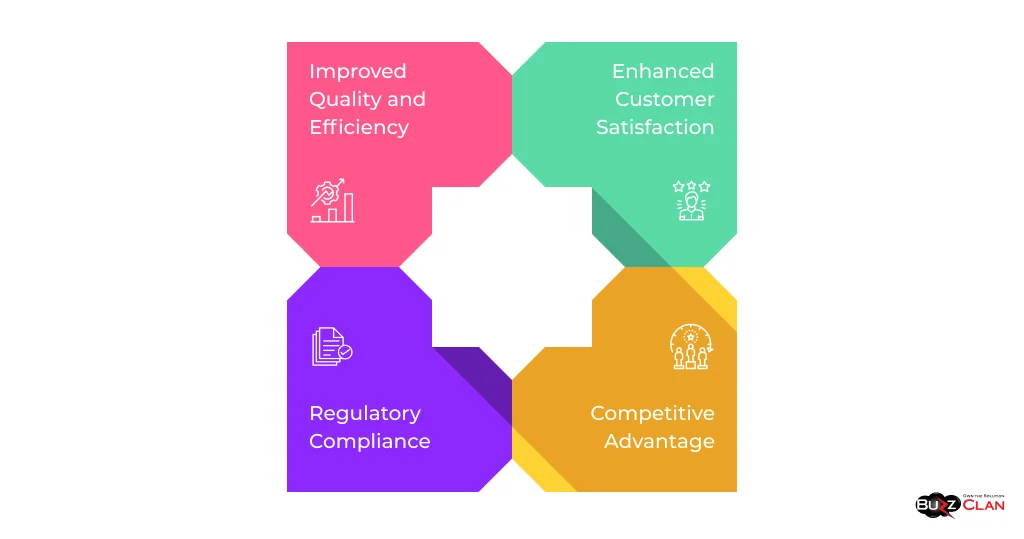Mastering ISO Compliance & Standards: A Comprehensive Roadmap to Organizational Excellence
Rahul Rao
Jul 26, 2024
Introduction
In today’s globally competitive business landscape, organizations increasingly recognize the importance of adhering to international standards to ensure their processes’ quality, security, and efficiency. ISO compliance has emerged as a crucial factor in demonstrating an organization’s commitment to excellence and meeting the evolving expectations of customers, partners, and regulatory bodies.
This comprehensive guide will delve into the world of ISO compliance, covering various ISO standards, their specific requirements, the benefits of compliance, and best practices for implementation. Whether you’re new to ISO standards or looking to enhance your existing compliance efforts, this article will provide valuable insights to help you navigate the complex landscape of ISO compliance.
Throughout this piece, we’ll explore key ISO standards such as ISO 27001, ISO 9001, ISO 14001, ISO 20022, and ISO 9000, detailing their specific requirements and significance. We’ll also discuss the general compliance requirements common across various ISO standards, the benefits of achieving compliance, and strategies for overcoming common challenges in the implementation process.
What is ISO Compliance?
ISO compliance refers to the adherence to standards set by the International Organization for Standardization (ISO), a global body that develops and publishes international standards across various industries and sectors. These standards provide specifications for products, services, and systems to ensure quality, safety, and efficiency.
ISO compliance is significant in global business practices as it:
- Demonstrates commitment to quality and best practices
- Enhances credibility and trust among customers and partners
- Facilitates international trade by providing globally recognized standards
- Improves operational efficiency and risk management
- Helps meet regulatory requirements in various industries
Organizations strive to achieve ISO compliance to gain a competitive edge, improve their processes, and meet the increasing demands of a global marketplace. ISO compliance can impact various aspects of business operations, from product development and manufacturing to service delivery and environmental management.
Key ISO Standards
Here are the essential key ISO standards that provide frameworks for organizations to improve processes, reduce risks, and meet international best practices across different operational aspects.
ISO 27001 Compliance
ISO 27001 is an international standard focused on information security management systems (ISMS). It provides a framework for organizations to protect their information assets and manage information security risks effectively.
Compliance requirements for ISO 27001 include:
- Establishing an ISMS
- Conducting a risk assessment
- Implementing security controls
- Regularly monitoring and reviewing the ISMS
- Continuous improvement of the ISMS
A checklist for ISO 27001 compliance typically includes:
- Defining the scope of the ISMS
- Conducting a comprehensive risk assessment
- Implementing appropriate security controls
- Developing and maintaining security policies and procedures
- Training employees on information security practices
- Conducting internal audits
- Management review of the ISMS
Various software solutions, including GRC platforms, risk management tools, and specialized ISMS software, can assist with ISO 27001 compliance. These tools can help automate compliance processes, manage documentation, and facilitate risk assessments.
AI is playing an increasingly important role in ISO 27001 compliance, offering capabilities such as:
- Automated threat detection and response
- Predictive risk analysis
- Intelligent data classification and protection
- Automated compliance monitoring and reporting
ISO 9001 Compliance
ISO 9001 is the international standard for quality management systems (QMS). It provides a framework for organizations to consistently deliver products and services that meet customer and regulatory requirements.
Key requirements for ISO 9001 compliance include:
- Establishing a QMS
- Leadership commitment to quality
- Customer focus
- Process approach to management
- Continuous improvement
- Evidence-based decision making
ISO 14001 Compliance
ISO 14001 focuses on environmental management systems (EMS), helping organizations minimize their environmental impact and comply with applicable laws and regulations.
Requirements for ISO 14001 compliance include:
- Developing an environmental policy
- Identifying environmental aspects and impacts
- Setting environmental objectives and targets
- Implementing programs to achieve objectives
- Monitoring and measuring environmental performance
- Continual improvement of the EMS
ISO 20022 Compliance
ISO 20022 is a standard for electronic data interchange between financial institutions. It provides a common platform for financial messages across different business domains.
Steps to achieve ISO 20022 compliance include:
- Understanding the ISO 20022 message formats and structures
- Mapping existing message formats to ISO 20022
- Upgrading systems to support ISO 20022 messages
- Testing and validating ISO 20022 message exchanges
- Training staff on ISO 20022 standards and processes
ISO 9000 Compliance
ISO 9000 is a family of quality management standards that provides the foundational concepts and principles for ISO 9001. While not directly certifiable, compliance with ISO 9000 principles is crucial for implementing an effective quality management system.
Key principles of ISO 9000 include:
- Customer focus
- Leadership
- Engagement of people
- Process approach
- Improvement
- Evidence-based decision making
- Relationship management
ISO Compliance Requirements and Standards
General compliance requirements common across various ISO standards include:
- Management commitment and leadership
- Documented policies and procedures
- Risk assessment and management
- Employee training and awareness
- Internal audits and management reviews
- Continual improvement processes
- Documentation and record-keeping
Specific compliance standards vary across industries and sectors, such as:
- ISO 13485 for medical devices
- ISO 22000 for food safety management
- ISO 45001 for occupational health and safety
- ISO 50001 for energy management
Benefits of ISO Compliance

Discover several benefits of ISO compliance, such as better operational efficiency, resource management, and business credibility.
Improved Quality and Efficiency:
ISO compliance leads to:
- Streamlined processes and reduced waste
- Consistent product and service quality
- Improved operational efficiency
- Better resource management
Enhanced Customer Satisfaction:
ISO compliance impacts customer satisfaction by:
- Ensuring consistent quality of products and services
- Demonstrating commitment to customer needs
- Building trust and credibility in the marketplace
Regulatory Compliance:
ISO standards help organizations:
- Meet industry-specific regulatory requirements
- Stay ahead of changing regulations
- Reduce the risk of non-compliance penalties
Competitive Advantage:
Achieving ISO compliance provides:
- Enhanced reputation and credibility
- Access to new markets and customers
- Improved stakeholder confidence
- Differentiation from competitors
Challenges in Achieving ISO Compliance
Some common challenges that can arise while achieving ISO compliance in organizations are as follows:
| Common challenges | Strategies to overcome these challenges |
| Resource constraints (time, budget, personnel) | Securing management commitment and support |
| Resistance to change within the organization | Developing a clear implementation plan and timeline |
| Complexity of standards and requirements | Providing comprehensive training and education |
| Maintaining compliance over time | Leveraging technology and automation where possible |
| Integrating compliance with existing systems and processes | Fostering a culture of continuous improvement |
Implementing ISO Compliance
Implementing ISO compliance is an extensive process, encompassing several steps that help improve operational efficiency and risk management. These steps include:
Steps to achieve ISO compliance:
- Conduct a gap analysis to identify areas for improvement
- Develop an implementation plan and timeline
- Establish policies and procedures aligned with ISO requirements
- Train employees on new processes and requirements
- Conduct internal audits to assess compliance
- Implement corrective actions as needed
- Engage a certification body for external audit and certification
Internal audits and assessments are crucial for:
- Identifying non-conformities and areas for improvement
- Ensuring ongoing compliance with standards
- Preparing for external audits and certification
Proper documentation and record-keeping are essential for:
- Demonstrating compliance during audits
- Tracking progress and improvements
- Facilitating knowledge transfer within the organization
Employee training and awareness play a vital role in:
- Ensuring understanding of ISO requirements
- Promoting a culture of quality and compliance
- Empowering employees to contribute to compliance efforts
Continuous improvement is necessary to:
- Maintain compliance over time
- Adapt to changing business environments and requirements
- Maximize the benefits of ISO compliance
Case Studies and Real-World Examples
With case studies, get real-world examples and understand how implementing different ISO compliance standards leads to continuous improvement and enhanced product quality. Some of them are as follows:
Case Study 1: Manufacturing Company Achieves ISO 9001 Compliance
A medium-sized manufacturing company implemented ISO 9001 to improve product quality and customer satisfaction.
Key steps included:
- Establishing a quality management system
- Mapping and optimizing core processes
- Implementing a robust document control system
- Conducting regular internal audits
Results:
- 30% reduction in product defects
- 25% improvement in on-time deliveries
- Increased customer satisfaction scores
Case Study 2: IT Service Provider Implements ISO 27001
An IT service provider sought ISO 27001 certification to enhance information security and win new clients.
The implementation process involved:
- Conducting a comprehensive risk assessment
- Developing and implementing security policies and procedures
- Training employees on information security best practices
- Implementing advanced security technologies
Outcomes:
- Improved ability to detect and respond to security threats
- Increased client trust and new business opportunities
- Enhanced overall organizational security posture
Key lessons learned:
- Management commitment is crucial for successful implementation
- Employee engagement and training are essential for maintaining compliance
- Regular audits and continuous improvement drive long-term success
- ISO compliance can lead to significant business benefits beyond certification
Future Trends in ISO Compliance
Explore the upcoming future trends that can emerge in ISO compliance due to technological advancements and globalization:
Technological advances impacting ISO compliance include:
- AI and machine learning for automated compliance monitoring
- Blockchain for secure and transparent record-keeping
- IoT for real-time data collection and monitoring
- Cloud-based compliance management platforms
Emerging ISO standards to watch:
- ISO 42001 for artificial intelligence management systems
- ISO 37301 for compliance management systems
- ISO 31030 for travel risk management
Globalization is influencing ISO compliance trends through:
- Increased focus on supply chain management and transparency
- Growing emphasis on sustainability and social responsibility
- Harmonization of standards across different regions and industries
Conclusion
ISO compliance is crucial in today’s global business environment. It offers organizations a framework for ensuring their processes’ quality, security, and efficiency. By adhering to internationally recognized standards, businesses can enhance their credibility, improve operational performance, and gain a competitive edge in the marketplace.
Throughout this guide, we’ve explored various ISO standards, their specific requirements, and the benefits of achieving compliance. We’ve also discussed strategies for overcoming common challenges in the implementation process and provided insights into future trends shaping the landscape of ISO compliance.
As organizations continue to navigate an increasingly complex and interconnected business world, the importance of ISO compliance will likely grow. By embracing these standards and committing to continuous improvement, businesses can position themselves for long-term success and sustainable growth in the global marketplace.
FAQs

Get In Touch
